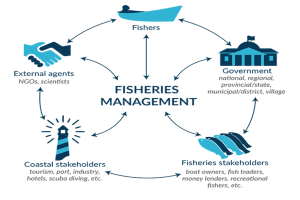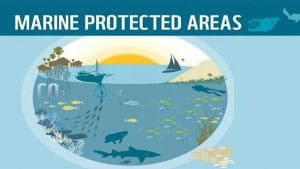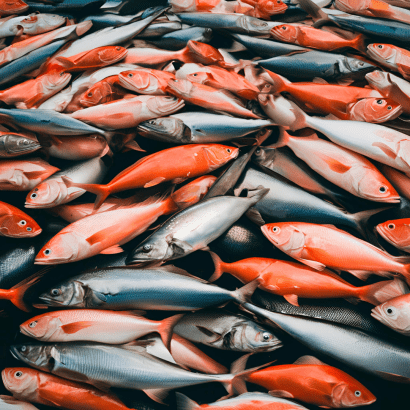
Fishery management has become a fundamental pillar for ensuring the sustainability of marine ecosystems. As human demands on natural resources grow, efficient management of fisheries is key to maintaining the balance between exploiting marine species and conserving their habitat. This approach not only benefits coastal communities but also helps preserve global biodiversity.
Below, we will explore the importance of fishery management and how it can make a difference in preserving our oceans.
Contents
What is Fishery Management?
Fishery management is a set of practices, regulations, and policies designed to control the extraction of fishery resources and ensure that marine populations remain stable over time. Overexploitation of the oceans has driven many species to the brink of collapse, making fishery management a vital resource.
Main Objectives of Fishery Management
Fishery management has several key objectives focused on sustainability:
- Ecological sustainability: Maintaining fish populations and their habitats.
- Economic equity: Fairly distributing the benefits of fishing.
- Social protection: Ensuring the survival of fishing-dependent communities.
- Biodiversity conservation: Protecting marine life for future generations.
Methods and Techniques in Fishery Management🐟
Implementing a fishery management program requires multiple tools and approaches. Below, we explore some of the most commonly used methods.
1. Catch Quotas
This method regulates the amount of fish that can be harvested from a specific area. Setting clear limits prevents populations from being overexploited. With proper quotas, species can reproduce and recover effectively.
2. Marine Protected Areas (MPAs)
MPAs are zones where fishing activity is limited or prohibited, allowing marine ecosystems to regenerate without human interference. These areas not only protect fish species but also foster biological diversity.
3. Controlled Fishing Seasons
Implementing specific fishing seasons allows species to reproduce and grow without being disturbed. This method helps fish populations reach optimal sizes before being harvested.
Challenges in Implementing Fishery Management
Despite the multiple benefits of fishery management, effective implementation faces several challenges. Overcoming these barriers is essential to ensure long-term success.
1. Lack of Scientific Knowledge
In many cases, insufficient information is available about the biology of species and marine ecosystems. This makes decision-making more difficult, and regulations may not always be effective.
2. Illegal, Unreported, and Unregulated Fishing (IUU)
Illegal fishing is a major threat to fishery management efforts. Lack of control in remote or poorly regulated areas allows species to be caught without limits, severely impacting their populations.
3. Conflicts of Interest
Decisions about fishing often involve economic and political interests that may conflict with ecological sustainability. Balancing the economic needs of fishing communities with environmental protection is a constant challenge.
The Importance of Education and Awareness🐟
A key aspect of success in fishery management is education. Informing fishermen, communities, and the general public about best sustainability practices and the importance of preserving marine ecosystems is crucial.
Education for Fishermen
Training fishermen in sustainable practices and using new technologies can make a big difference. If fishermen understand how their work impacts fish populations, they will be more willing to follow regulations.
Public Awareness
Public opinion can be a powerful tool for driving change. If consumers are informed about the origin of seafood and prefer to buy fish from sustainable sources, fishing practices will adapt accordingly.
The Role of International Organizations🐟
Organizations such as the FAO (Food and Agriculture Organization of the United Nations) and the International Commission for the Conservation of Atlantic Tunas (ICCAT) play a crucial role in fishery management at a global level.
International Treaties
Through international agreements, nations can coordinate to manage fishing in shared areas. This type of cooperation is essential to prevent overfishing in international waters.
Monitoring and Control
These organizations also implement monitoring systems to oversee fishing activity and ensure compliance with regulations. Technologies like satellite tracking allow real-time observation of what happens in the oceans, reducing illegal fishing.
Transitioning to a Sustainable Future🐟
The future of the oceans depends largely on the effectiveness of fishery management. If proper management is achieved, future generations will be able to continue enjoying marine resources without compromising biodiversity.
Technological Innovation
Technological innovations, such as the use of drones to monitor hard-to-reach areas or data analysis to predict fishing patterns, are key to improving the efficiency of marine resource management.
Political Commitment
Finally, political will is essential for implementing changes. Governments must commit to fishery policies that not only benefit the economy in the short term but also ensure long-term sustainability.
Conclusion
Fishery management is essential for preserving marine life and maintaining a balance between the use of fishery resources and their conservation. The combination of effective regulations, education, and global commitment is crucial to ensuring that our actions do not irreversibly affect marine ecosystems. If properly implemented, this management will not only guarantee the survival of marine species but also protect the livelihoods of millions of people who depend on fishing.


